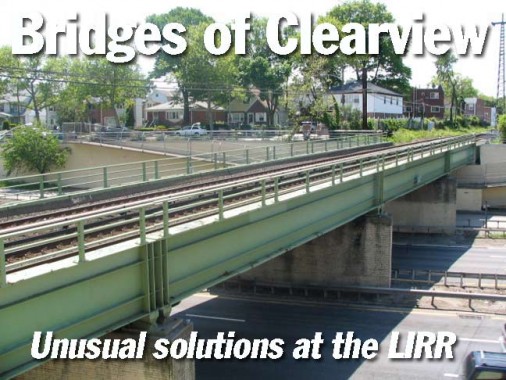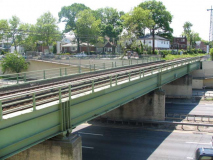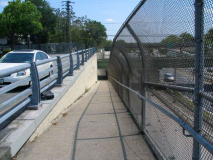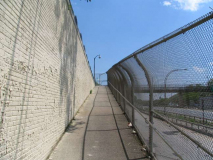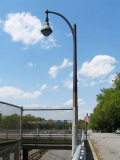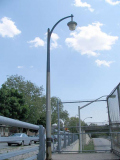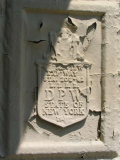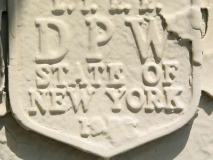The Clearview Expressway runs from the Throgs Neck Bridge south, terminating at Hillside Avenue (unusual for an expressway to terminate at a local-access thoroughfare). It was first proposed in 1955 and constructed between 1960 and 1963, mostly in an open cut featuring interchanges with the Long Island Expressway and Grand Central Parkway. It was built over community opposition, as many of the Robert Moses projects from the 1930s through 1960s were, and it necessitated the displacement of over 400 families.
I have taken the Long Island Rail Road past the Clearview for over 20 years, and noticed an unusual feature. The Clearview has a service road and walkway on both sides, and while the roadway is interrupted for the railroad crossing, the walkways aren’t.
The walkways on both sides are slung down toward the roadway and under the railroad, in an unusual arrangement. The usual method, I suppose, would have involved pedestrian bridges with steps up and down, or just forget the walkways and have people use the nearest streets that clear the railroad, Francis Lewis Boulevard or Corporal Kennedy Street. These were considered to be too far away, I suppose. The walkways feature both a steep downhill and uphill.
The walkways aren’t lit, except under the railroad overpass and where they meet the expressway service roads. Original Clearview expressway lampposts from 1960 still do the job here, and one post even has its Westinghouse incandescent “cuplight” still attached. Most of the other walkways have been updated to sodium lamps by now.
An interesting anomaly on the walkway is the presence of a state of New York Department of Works sign. The DPW was formed in 1876 as an amendment to the New York State constitution, and originally oversaw canal construction, though in later years it began to handle most construction in general. In 1967 it was merged with other departments into the NY State Department of Transportation.
5/15/14
